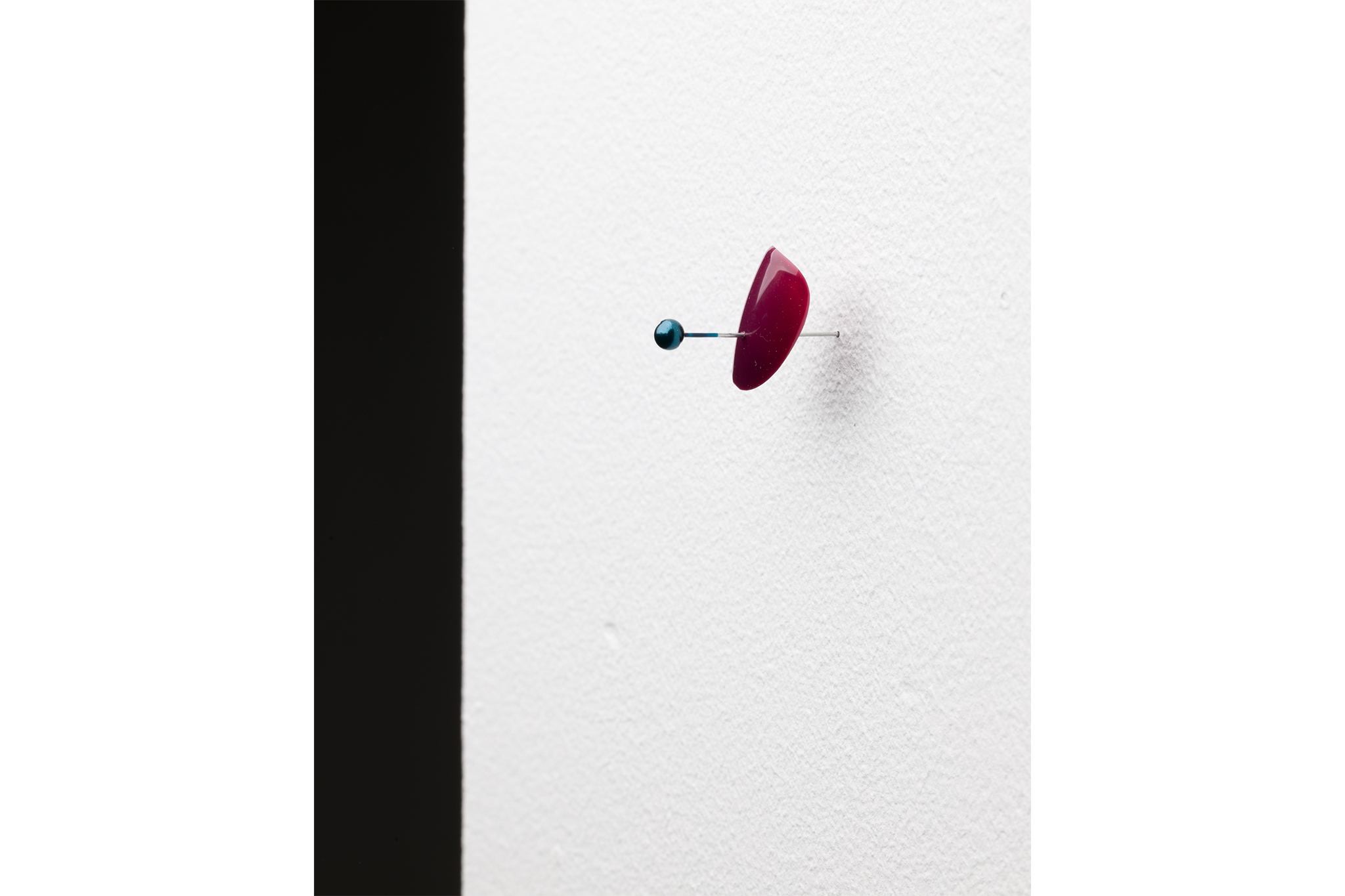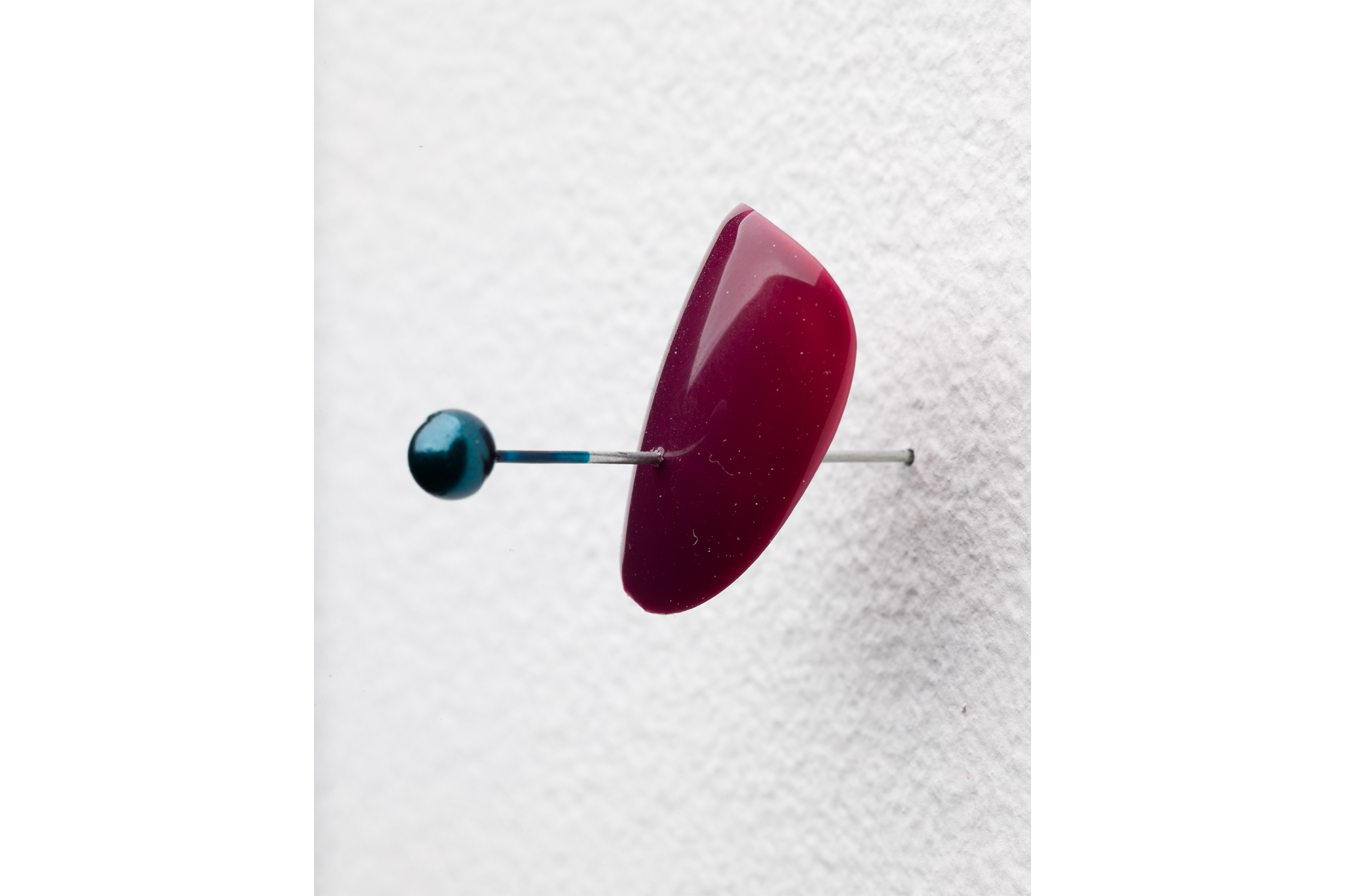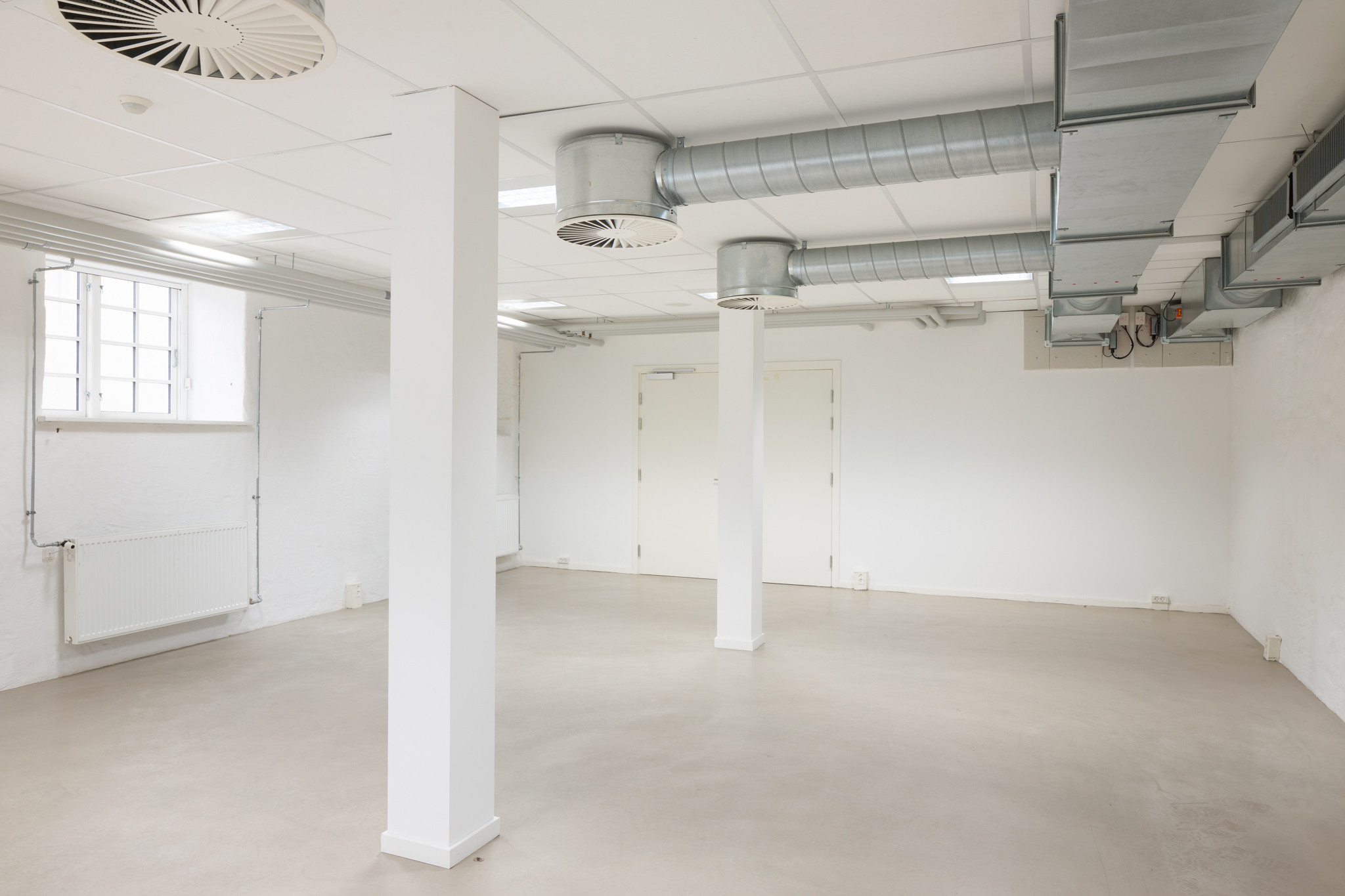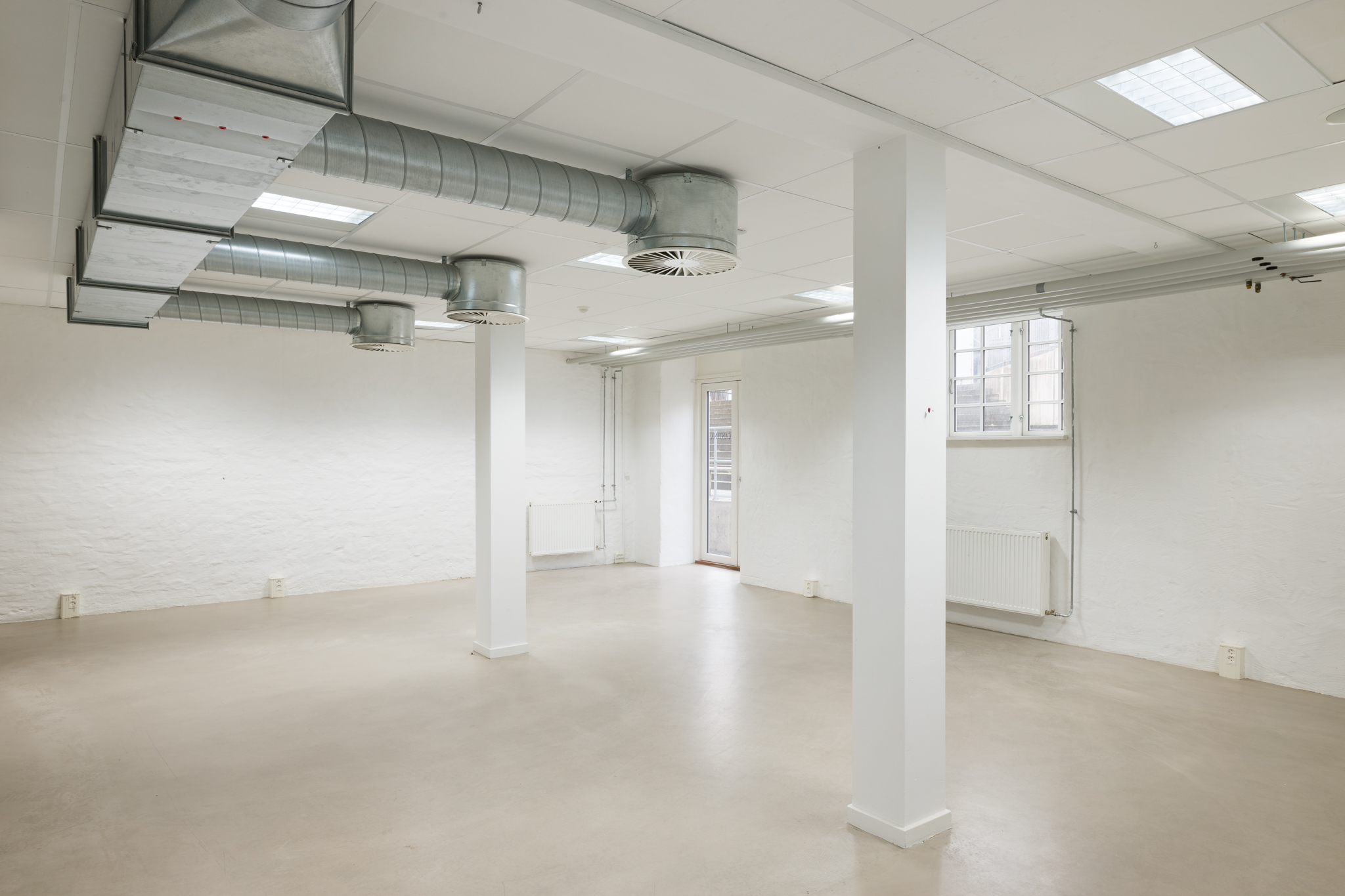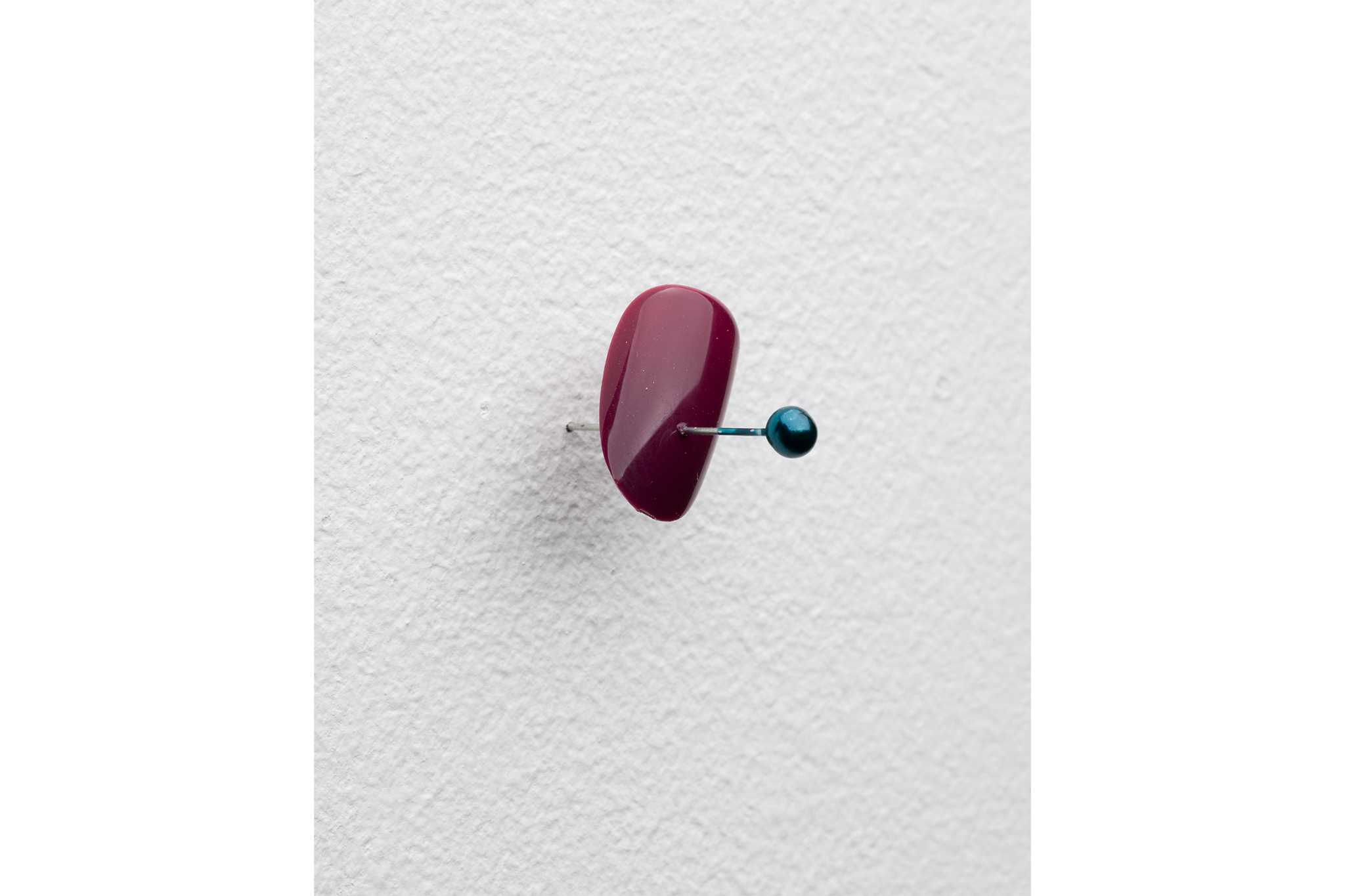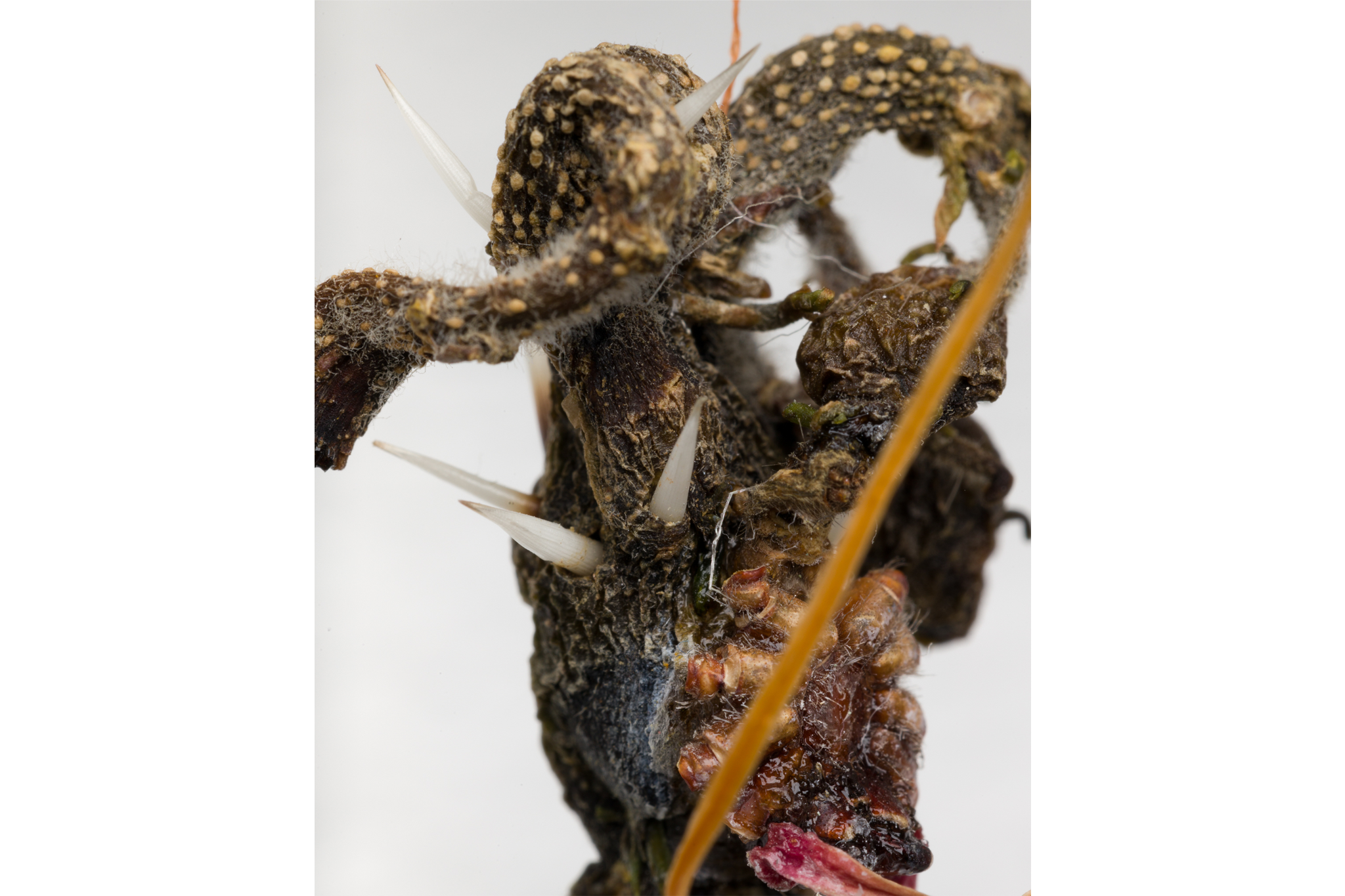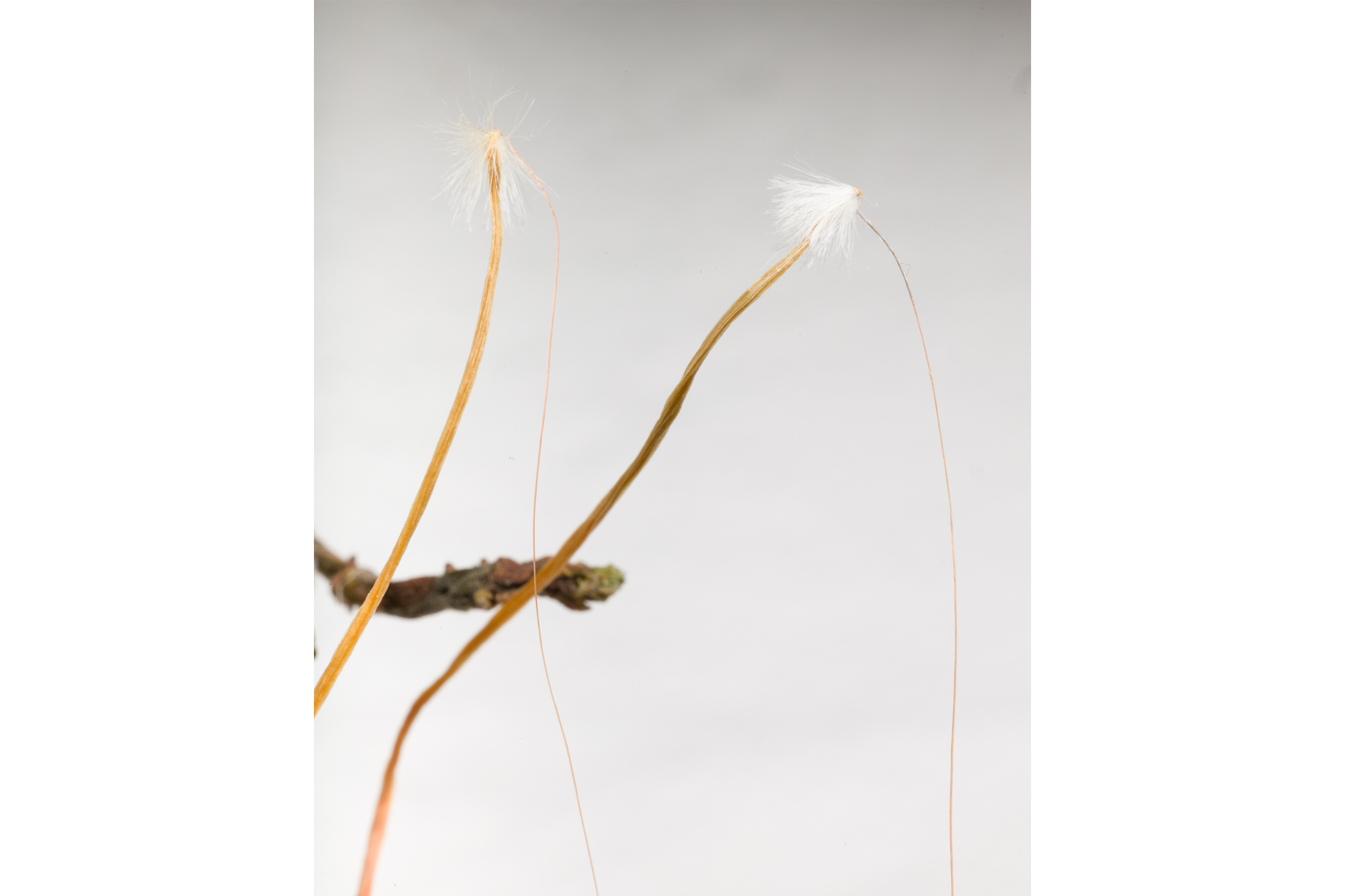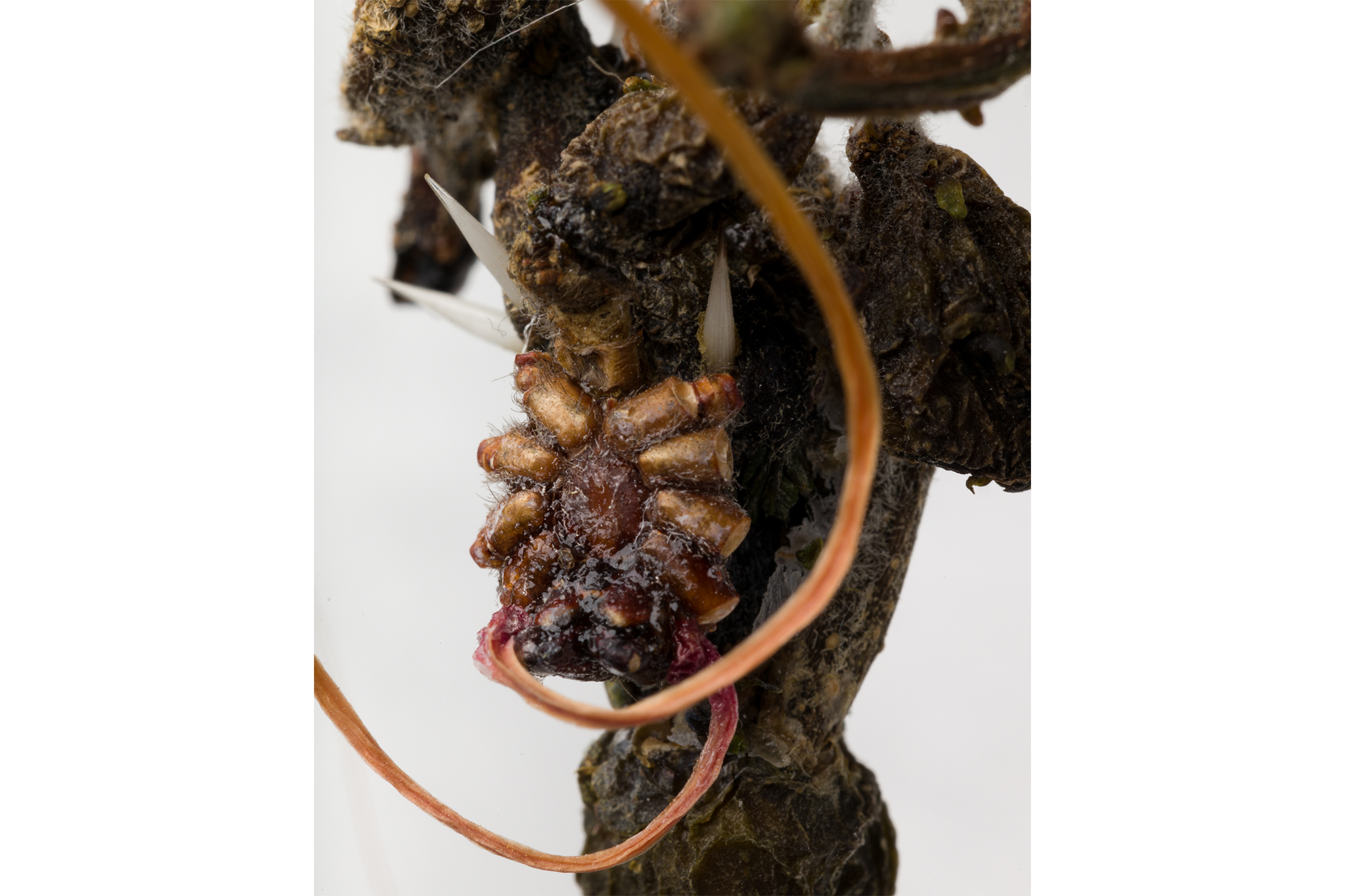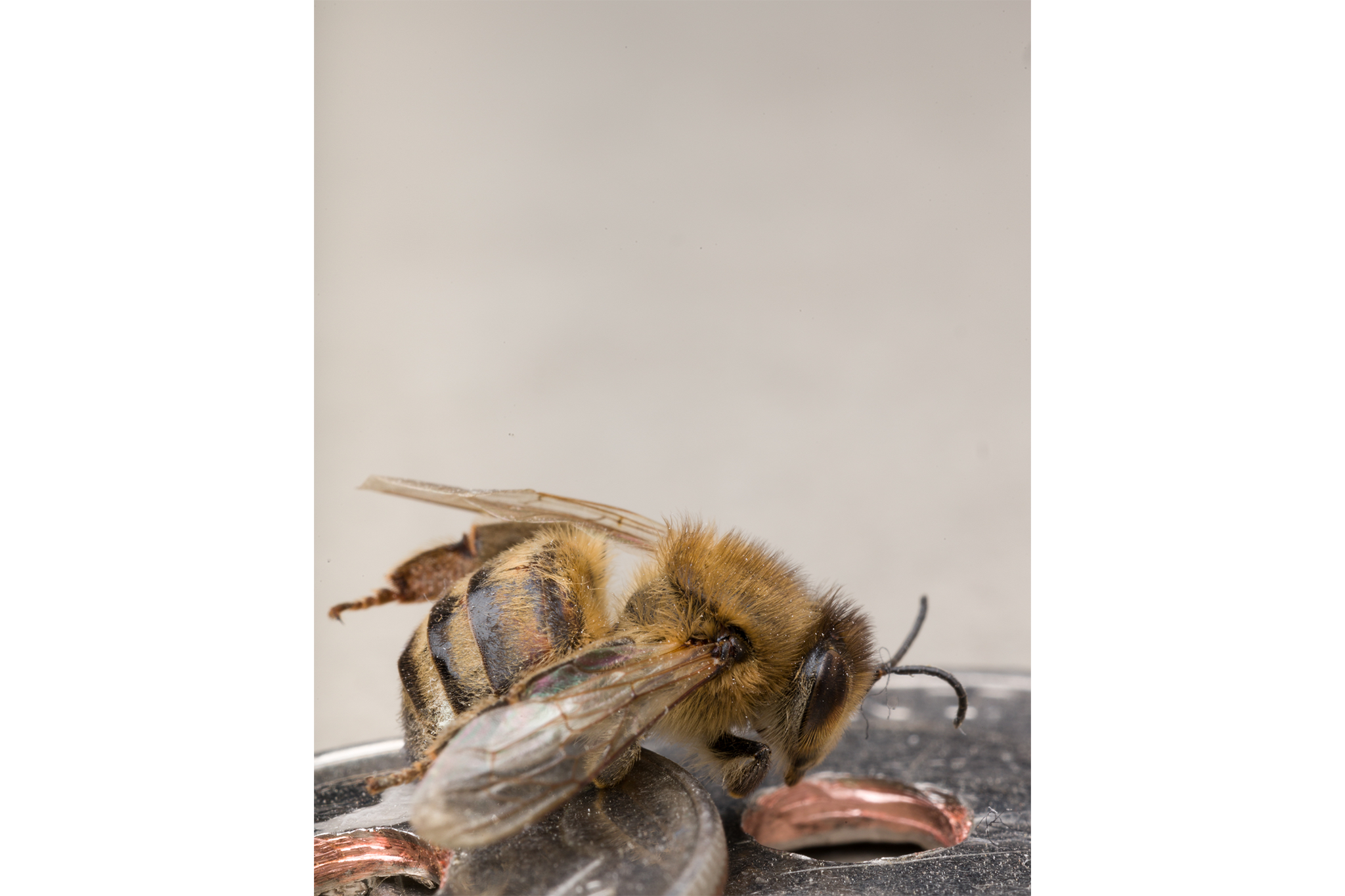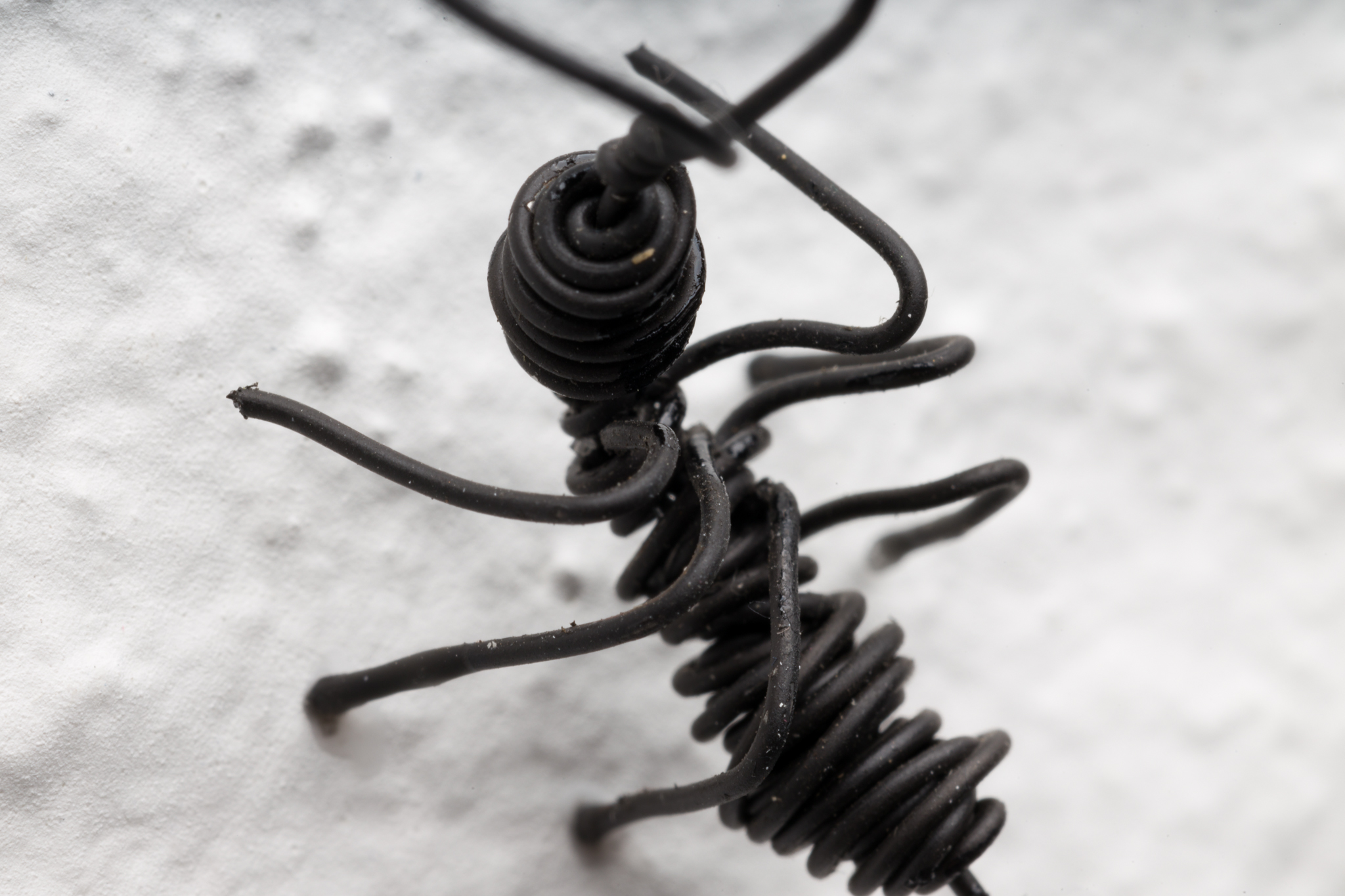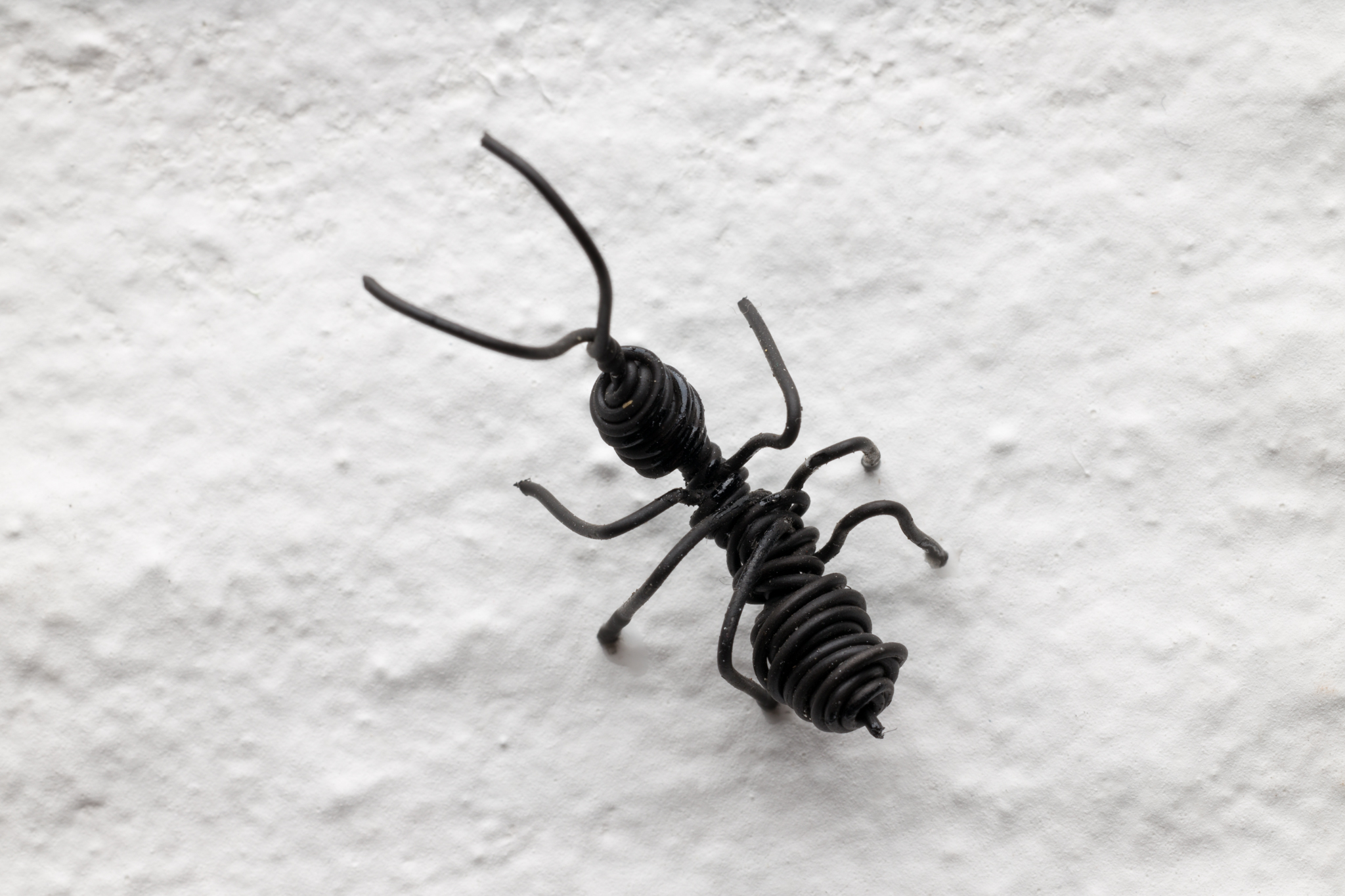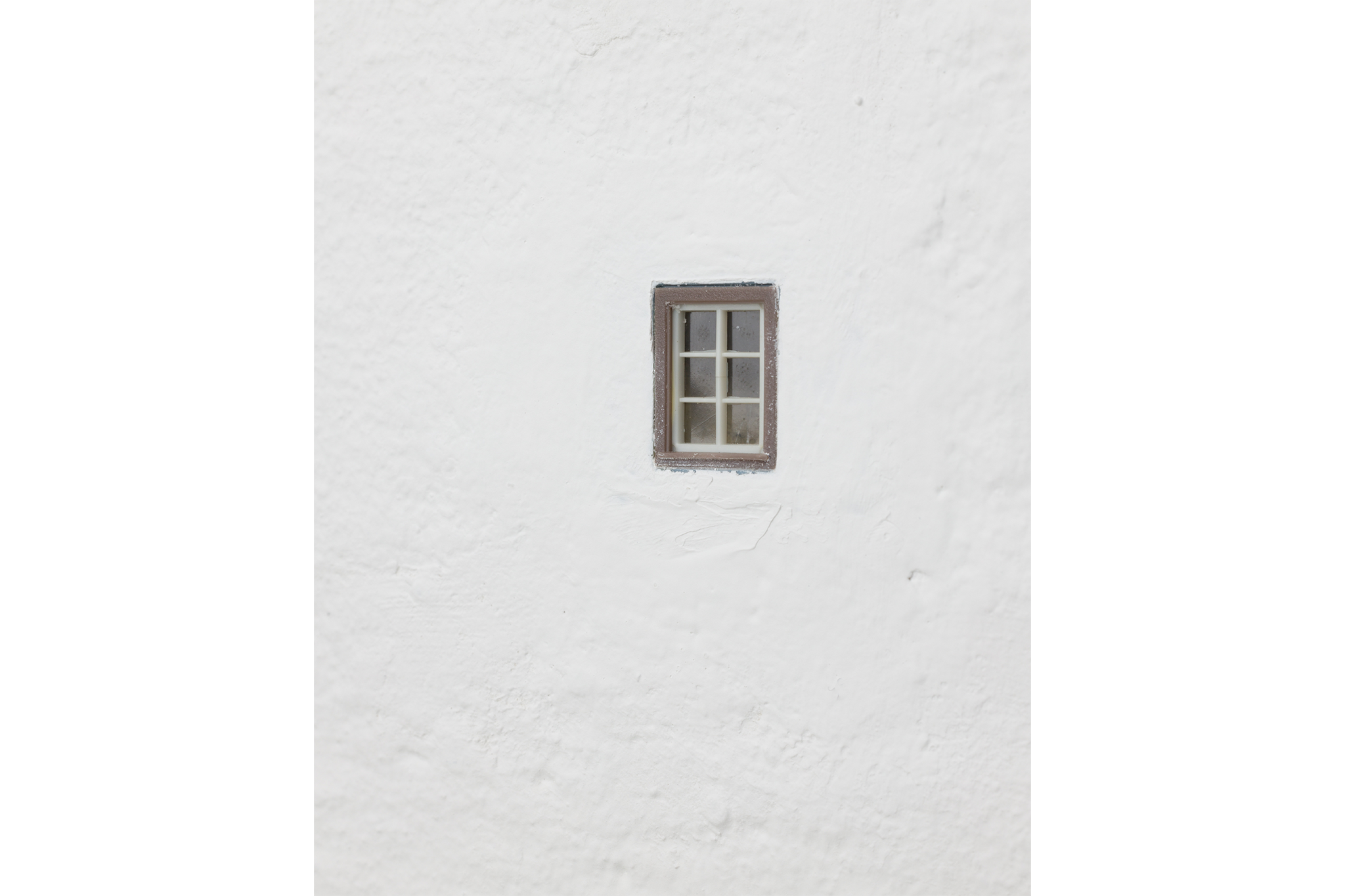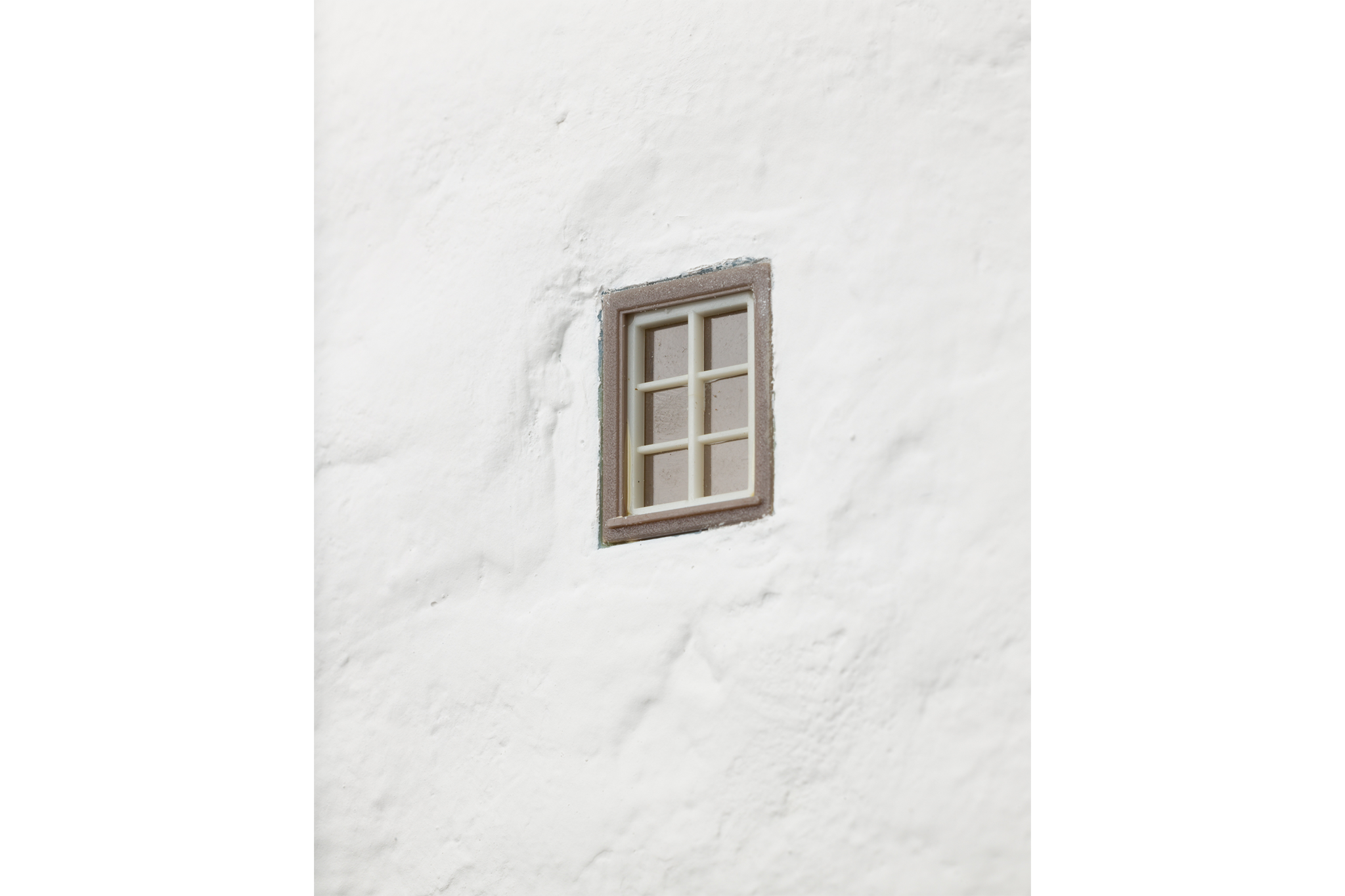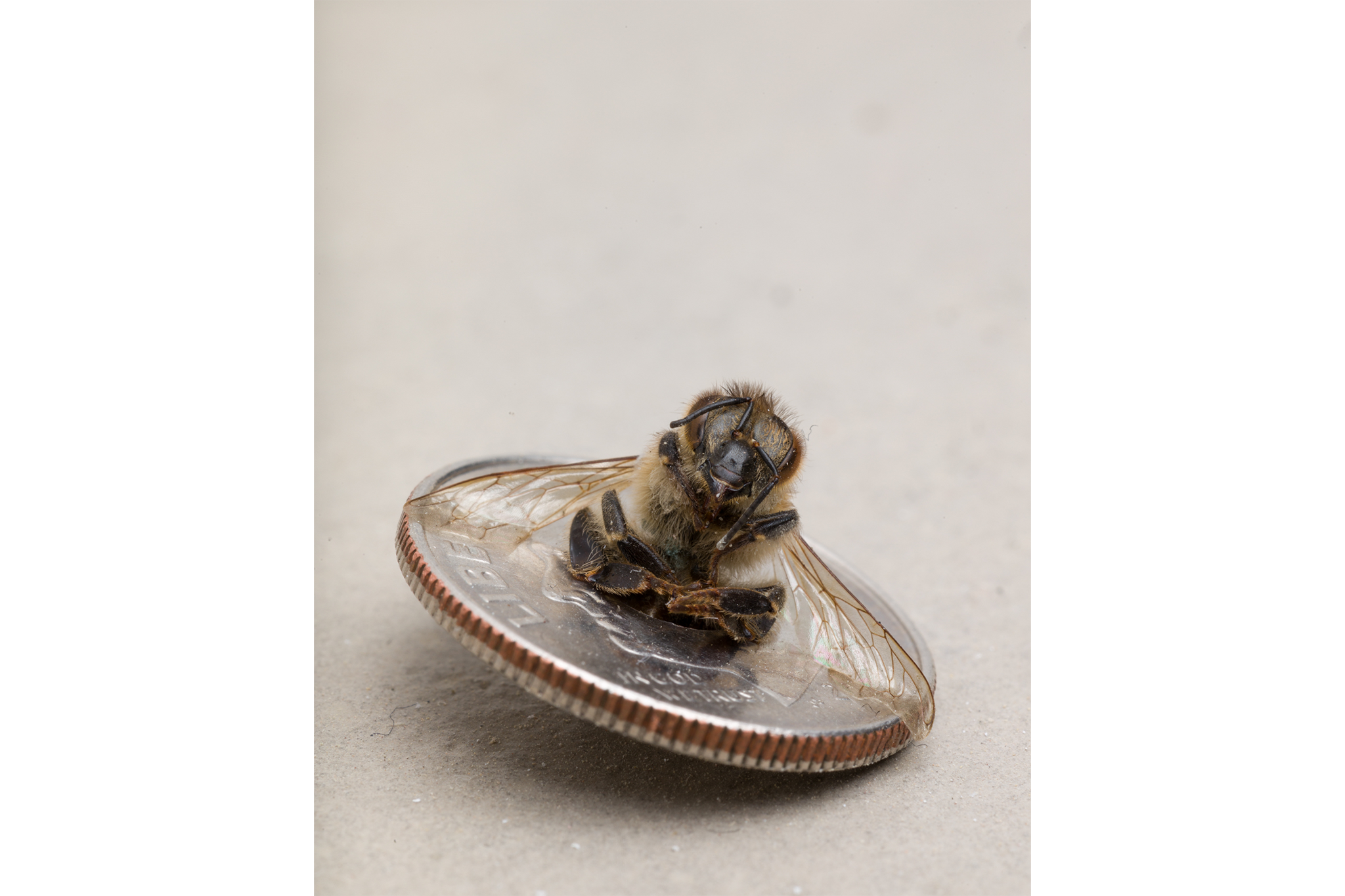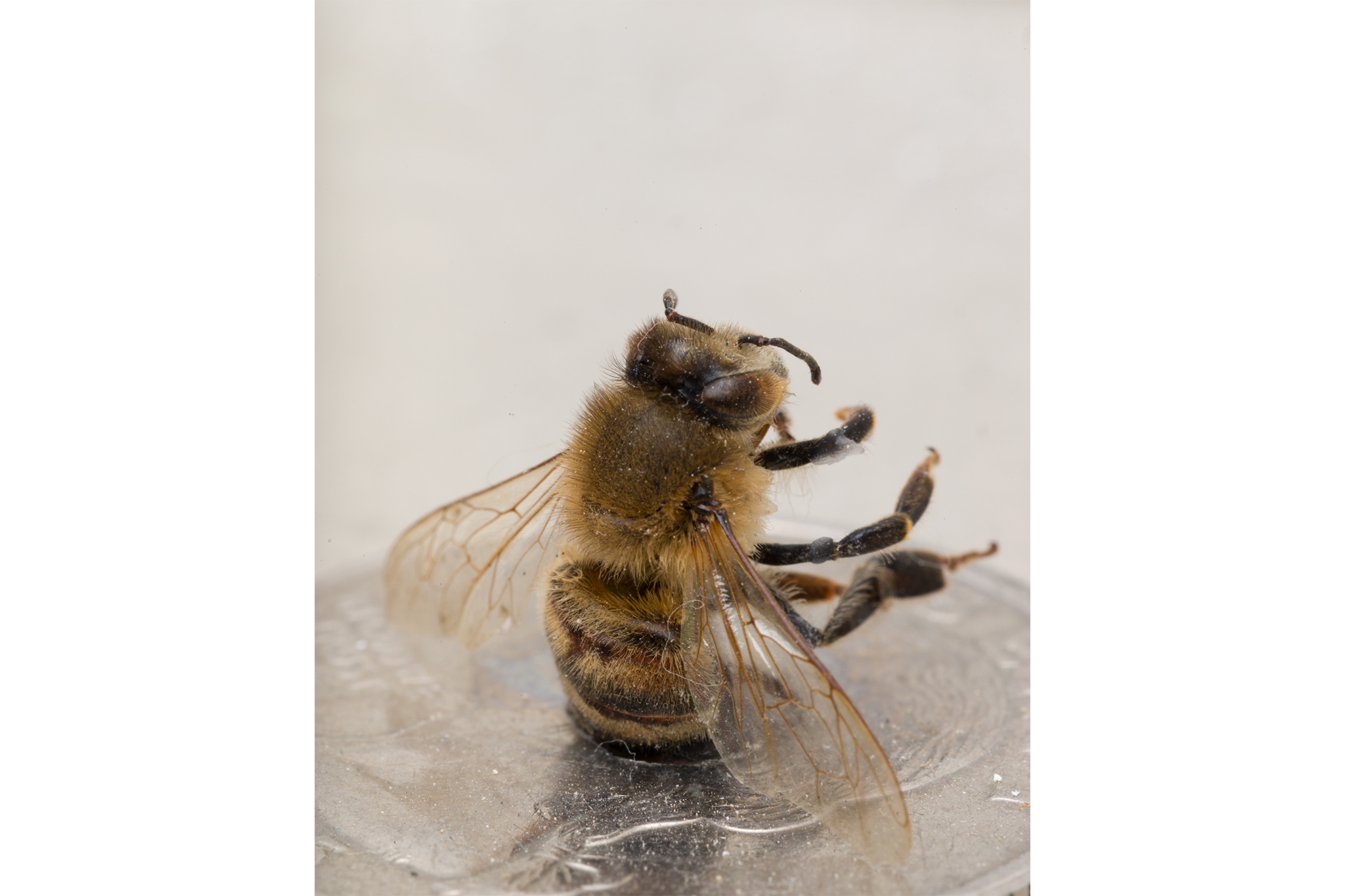
What is this, an exhibition for ants?!
13.01 - 12.02 2023
The exhibition What is this, an exhibition for ants?! is a group show with artists Jens Settergen, Julie Stavad, Birke Gorm, Mikkel Carlsen and Laura Hjort Jensen.
The exhibition is open February 24 - March 26 2023
Opening hours:
Wednesday - Friday 3-5 pm
Saturday - Sunday 12-3 pm
+ by appointment
"What is this, an exhibition for ants?!" When the viewer enters the exhibition space, this statement may cross their mind. The space, which looks empty but with thimble-sized works of art scattered around the room, may not even be recognizable as an exhibition to the viewer at first glance. One might even enter the space and with a shrug exit again, thinking there simply is no exhibition. But if the viewer would instead follow the careful attention of the therolinguists in Ursula K. Le Guin's ‘The Author of the Acacia Seeds’, the works might begin to come into appearance. In this short story, the reader is presented with pieces of text written on the surface of a number of acacia seeds found left inside an ant colony. Near the 31st acacia seed of the manuscript is the decapitated worker ant who authored the text. The manuscript is interpreted and discussed by the text's discoverer, researcher G. d'Arbay T. R. Bardol: Is the text a tribute to the ant queen or a revolutionary manifesto? Had the writing never been discovered on the surface of the acacia seeds, we would be left without the opportunity to discuss the themes of this piece of literature. Therefore, we would like to ask the viewer to apply the same curiosity and care to view the works in this exhibition. In the exhibition, we have asked the artists to produce works that are no larger than 3x3x3cm. A large work for an ant, surpassing its own body, but a small work for a human. At this scale, you could hold the work between your fingertips and maybe even be able to crush it to pieces. With what kind of care do we examine works of this size? And how do we look at the exhibition as a whole when the works themselves cannot really be seen from a distance? Instead, we can catch ourselves looking at what looks like a private collection of trinkets or a scenery where the works can be discovered by bending down or leaning in as if looking for insects in a forest.
Throughout art history, artists have worked with the scale of artworks and how to use scale as a tool. At the art academy, students may encounter the point of criticism: "What if you made it bigger?", a question that links the meaning and importance of the work to its size. Since ancient times, people have made us feel small and humble by placing huge, awe-inspiring works to tower over us. Much later in the 60s, artists such as Agnes Denes, Robert Smithson, Nancy Holt and Walter De Maria had a bone to pick with scale. They created works so large that some of them were forced to leave the white cube and instead populate the deserts and the open landscapes. In Claes Oldenburg and Coosje Van Bryggen's enormous sculptures, everyday objects such as ice cream cones and shuttlecocks are scaled up into bizarre colossi, which, with their impressive scale and humorous pop motifs, are sprinkled over parks and landscapes.
At the other end of the scale, miniature paintings adorned the pages of illuminated manuscripts of epic tales and religious texts during the Middle Ages. Out of this tradition, miniature paintings emerged during the 16th and 17th centuries in the form of portraits, often set in medallions as portable, private images intended to be worn close to the body or held close to hand. In the late 1930s, Marcel Duchamp created the ‘Boîte-en-valise’, a kind of collector's box of miniature reproductions of his most iconic works of art. Later, Richard Pettibone, inspired by Duchamp, repeated the gesture in a series of miniature reproductions of works by Andy Warhol, Frank Stella, Roy Lichtenstein and Duchamp himself.
To explore the invisible life of things, and due to the limitations of our own vision, the exhibition will be photo-documented with a macro lens, often used to capture the details of very small things such as insects or plants. Instead of the usual exhibition documentation, where the photographer tries to capture the exhibition from the eyes of the visitor, this photographic gaze offers a completely different perspective that transcends the sensual and moves into the hidden language of the works.
Text by Luna Lund Jensen
Poster by Matias Gulvas The exhibition is kindly supported by the 15 Juni Fonden, The Obel Family Foundation, Beckett Fonden and Aarhus Municipality.
Jens Settergren graduated from the Jutland Academy of Fine Arts in 2016. He has exhibited nationally at SMK - The National Gallery of Denmark, KØS Museum of art in public spaces, Kunsthal Aarhus, Kunstmuseum Brandts, Kunsthal Nord, X and Beyond, Gas 9 Gallery, Ringsted Galleriet, Roskilde Festival and Art Hub Copenhagen, and internationally at Die Raum, Berlin, Haus der Kulturen der Welt, Berlin, Forum des images, Paris, The Poor Farm, Wisconsin, Institute for New Connotative Action, Portland and Art Sonje Center, Seoul. In recent years Settergren has worked with Dan- ish public art commissions e.g. The Galaxy Path (2021), Vollsmose, Odense, commissioned by The Danish Arts Foundation & Odense Municipality and Nukleus (2022), Samsø public School, Tranebjerg, supported by The Danish Arts Foundation & Samsø Municipality. In 2019 Settergren held a residency at ISCP in New York, and in 2021-2022 he was part of The Bikuben Foundation Studio Program (DK). His works are part of the collections of SMK - The National Gallery of Denmark, The Danish Arts Foundation, KØS Museum, and the Copenhagen Municipality. In 2020 he received the Carl Nielsen & Anne Marie Carl Nielsen Talent Prize, and in 2022 he was selected for the Danish Arts Foundation’s two year career grant, The Young Artist Elite.
Julie Stavad (b. 1987) graduated from the Jutland Art Academy in 2015 and among other things exhibited at O-Overgaden (DK), Holstebro Art Museum (DK), Vejle Art Museum (DK), Kunsthalle Seinäjoki (FI) and LIAR (USA). Stavad is the recipient of several grants, including the Niels Wesel Bagges Art Fund, Carl Nielsen and Anne Marie Carl-Nielsen’s Talent Prize and Astrid Noack’s grant.
Birke Gorm (b. 1986, Hamburg — Lives and works in Vienna). Recent solo and duo exhibitions include ‘dead stock’ at MAK, Vienna (2023); ‘routes and routines’ at Martina Simeti, Milan (w. Marie Lund); and ‘full stop’ at Politikens Forhal, Copenhagen (2021). Upcoming and recent group exhibitions include Kraupa-Tuskany Zeidler, Berlin; Museum Sønderjylland, Tønder (both 2023); mumok, Vienna; Schirn Kunsthalle, Frankfurt am Main, and Kunsthalle Vienna (all 2022).
The exhibition What is this, an exhibition for ants?! is a group show with artists Jens Settergen, Julie Stavad, Birke Gorm, Mikkel Carlsen and Laura Hjort Jensen.
The exhibition is open February 24 - March 26 2023
Opening hours:
Wednesday - Friday 3-5 pm
Saturday - Sunday 12-3 pm
+ by appointment
"What is this, an exhibition for ants?!" When the viewer enters the exhibition space, this statement may cross their mind. The space, which looks empty but with thimble-sized works of art scattered around the room, may not even be recognizable as an exhibition to the viewer at first glance. One might even enter the space and with a shrug exit again, thinking there simply is no exhibition. But if the viewer would instead follow the careful attention of the therolinguists in Ursula K. Le Guin's ‘The Author of the Acacia Seeds’, the works might begin to come into appearance. In this short story, the reader is presented with pieces of text written on the surface of a number of acacia seeds found left inside an ant colony. Near the 31st acacia seed of the manuscript is the decapitated worker ant who authored the text. The manuscript is interpreted and discussed by the text's discoverer, researcher G. d'Arbay T. R. Bardol: Is the text a tribute to the ant queen or a revolutionary manifesto? Had the writing never been discovered on the surface of the acacia seeds, we would be left without the opportunity to discuss the themes of this piece of literature. Therefore, we would like to ask the viewer to apply the same curiosity and care to view the works in this exhibition. In the exhibition, we have asked the artists to produce works that are no larger than 3x3x3cm. A large work for an ant, surpassing its own body, but a small work for a human. At this scale, you could hold the work between your fingertips and maybe even be able to crush it to pieces. With what kind of care do we examine works of this size? And how do we look at the exhibition as a whole when the works themselves cannot really be seen from a distance? Instead, we can catch ourselves looking at what looks like a private collection of trinkets or a scenery where the works can be discovered by bending down or leaning in as if looking for insects in a forest.
Throughout art history, artists have worked with the scale of artworks and how to use scale as a tool. At the art academy, students may encounter the point of criticism: "What if you made it bigger?", a question that links the meaning and importance of the work to its size. Since ancient times, people have made us feel small and humble by placing huge, awe-inspiring works to tower over us. Much later in the 60s, artists such as Agnes Denes, Robert Smithson, Nancy Holt and Walter De Maria had a bone to pick with scale. They created works so large that some of them were forced to leave the white cube and instead populate the deserts and the open landscapes. In Claes Oldenburg and Coosje Van Bryggen's enormous sculptures, everyday objects such as ice cream cones and shuttlecocks are scaled up into bizarre colossi, which, with their impressive scale and humorous pop motifs, are sprinkled over parks and landscapes.
At the other end of the scale, miniature paintings adorned the pages of illuminated manuscripts of epic tales and religious texts during the Middle Ages. Out of this tradition, miniature paintings emerged during the 16th and 17th centuries in the form of portraits, often set in medallions as portable, private images intended to be worn close to the body or held close to hand. In the late 1930s, Marcel Duchamp created the ‘Boîte-en-valise’, a kind of collector's box of miniature reproductions of his most iconic works of art. Later, Richard Pettibone, inspired by Duchamp, repeated the gesture in a series of miniature reproductions of works by Andy Warhol, Frank Stella, Roy Lichtenstein and Duchamp himself.
To explore the invisible life of things, and due to the limitations of our own vision, the exhibition will be photo-documented with a macro lens, often used to capture the details of very small things such as insects or plants. Instead of the usual exhibition documentation, where the photographer tries to capture the exhibition from the eyes of the visitor, this photographic gaze offers a completely different perspective that transcends the sensual and moves into the hidden language of the works.
Text by Luna Lund Jensen
Poster by Matias Gulvas The exhibition is kindly supported by the 15 Juni Fonden, The Obel Family Foundation, Beckett Fonden and Aarhus Municipality.
JENS SETTERGREN
Jens Settergren (b. 1989, DK) explores the contemporary interconnections of nature and technology and its effect on, and connection to, images. Settergren is interested in the different understandings images create and the power they hold. Settergren is further interested in affecting and hacking images to explore society’s collective fears and fantasies. He seeks out both the grand and captivating images and icons, while also placing everyday objects and commercial images in an unfamiliar context. Through the use of video, photography, sculpture, sound and digital animation, he examines art as a tool to renegotiate different narratives and examine the different forces that shape our reality.Jens Settergren graduated from the Jutland Academy of Fine Arts in 2016. He has exhibited nationally at SMK - The National Gallery of Denmark, KØS Museum of art in public spaces, Kunsthal Aarhus, Kunstmuseum Brandts, Kunsthal Nord, X and Beyond, Gas 9 Gallery, Ringsted Galleriet, Roskilde Festival and Art Hub Copenhagen, and internationally at Die Raum, Berlin, Haus der Kulturen der Welt, Berlin, Forum des images, Paris, The Poor Farm, Wisconsin, Institute for New Connotative Action, Portland and Art Sonje Center, Seoul. In recent years Settergren has worked with Dan- ish public art commissions e.g. The Galaxy Path (2021), Vollsmose, Odense, commissioned by The Danish Arts Foundation & Odense Municipality and Nukleus (2022), Samsø public School, Tranebjerg, supported by The Danish Arts Foundation & Samsø Municipality. In 2019 Settergren held a residency at ISCP in New York, and in 2021-2022 he was part of The Bikuben Foundation Studio Program (DK). His works are part of the collections of SMK - The National Gallery of Denmark, The Danish Arts Foundation, KØS Museum, and the Copenhagen Municipality. In 2020 he received the Carl Nielsen & Anne Marie Carl Nielsen Talent Prize, and in 2022 he was selected for the Danish Arts Foundation’s two year career grant, The Young Artist Elite.
JULIE STAVAD
Julie Stavad’s work is sculptural and embodies dualisms, it can be both large and impressive, while also vulnerable and soft. Stavad plays with size and value, figuration and abstraction, and decontextualized ways we consider objects and space. Through sculptural and storytelling actions, such as dressing a refrigerator in a tight-fitting nylon stocking, breaking a three-meter tall lipstick of wax, or stuffing a shoe with shiny cutlery, she asks questions about humans and their objects.When we are suddenly faced with a rock-hard shopping bag made of natural stone or a gigantic, sofa-piercing pin, we are confronted with the intangibility of things as well as the limits and possibilities of human actions. By combining various sensory modalities, Stavad attempts to create an interaction in which the quiet material speaks and verbal utterances take on a tangible shape.Julie Stavad (b. 1987) graduated from the Jutland Art Academy in 2015 and among other things exhibited at O-Overgaden (DK), Holstebro Art Museum (DK), Vejle Art Museum (DK), Kunsthalle Seinäjoki (FI) and LIAR (USA). Stavad is the recipient of several grants, including the Niels Wesel Bagges Art Fund, Carl Nielsen and Anne Marie Carl-Nielsen’s Talent Prize and Astrid Noack’s grant.
BIRKE GORM
Collecting archaic, easily accessible, often accidentally found material such as jute, terracotta, wood, and metal is characteristic of the work of Birke Gorm. Her sculptures convey a raw, appealing immediacy whose multilayered levels of meaning can be decoded upon closer inspection. By re-appropriating domestic labour processes — acts that have historically connoted unpaid work by women — the artist shows the enormous potential, contained in the production and circulation of everyday objects, for the dismantling of patriarchal gender hierarchies.Birke Gorm (b. 1986, Hamburg — Lives and works in Vienna). Recent solo and duo exhibitions include ‘dead stock’ at MAK, Vienna (2023); ‘routes and routines’ at Martina Simeti, Milan (w. Marie Lund); and ‘full stop’ at Politikens Forhal, Copenhagen (2021). Upcoming and recent group exhibitions include Kraupa-Tuskany Zeidler, Berlin; Museum Sønderjylland, Tønder (both 2023); mumok, Vienna; Schirn Kunsthalle, Frankfurt am Main, and Kunsthalle Vienna (all 2022).


